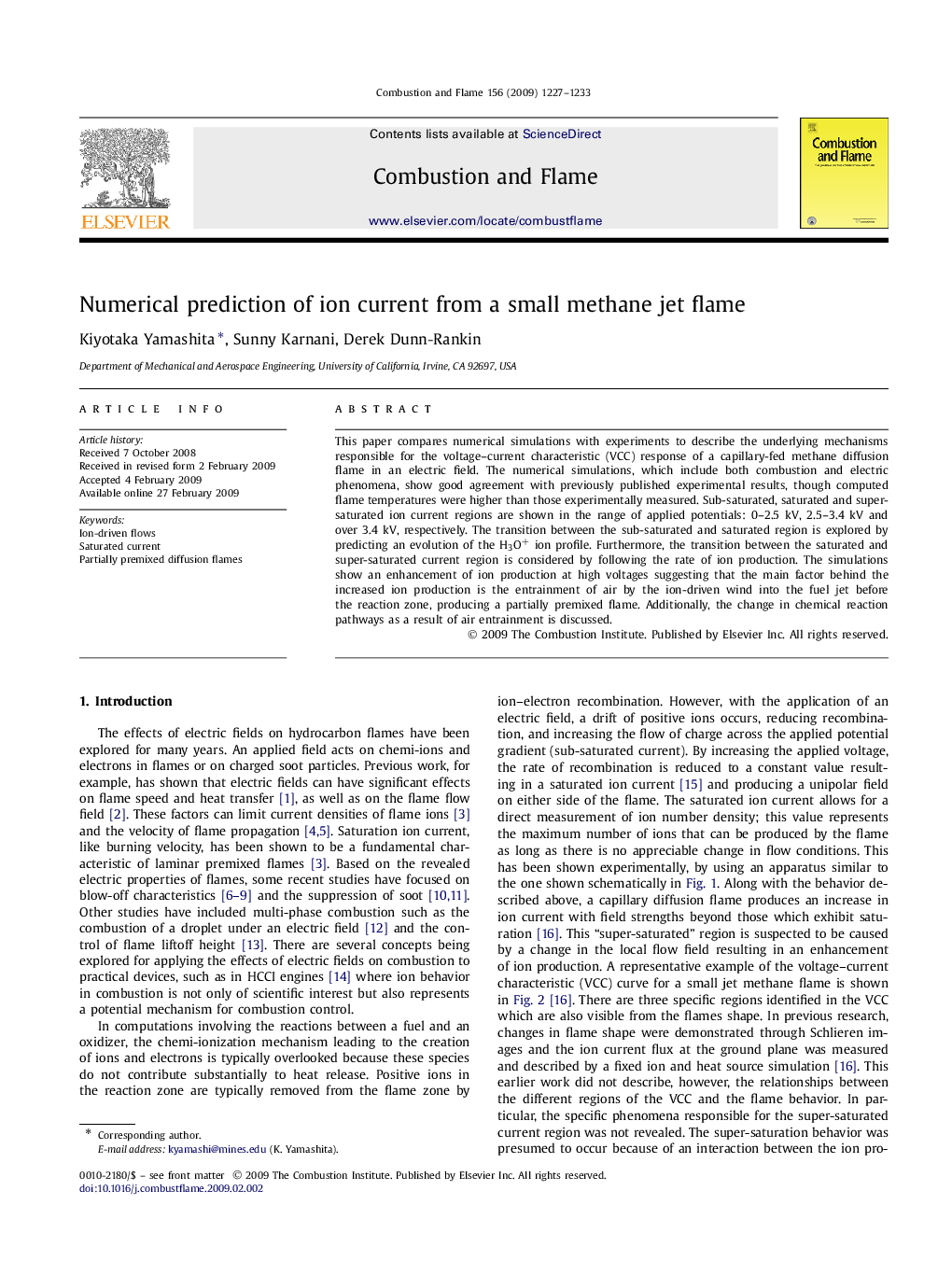| Article ID | Journal | Published Year | Pages | File Type |
|---|---|---|---|---|
| 166988 | Combustion and Flame | 2009 | 7 Pages |
This paper compares numerical simulations with experiments to describe the underlying mechanisms responsible for the voltage–current characteristic (VCC) response of a capillary-fed methane diffusion flame in an electric field. The numerical simulations, which include both combustion and electric phenomena, show good agreement with previously published experimental results, though computed flame temperatures were higher than those experimentally measured. Sub-saturated, saturated and super-saturated ion current regions are shown in the range of applied potentials: 0–2.5 kV, 2.5–3.4 kV and over 3.4 kV, respectively. The transition between the sub-saturated and saturated region is explored by predicting an evolution of the H3O+ ion profile. Furthermore, the transition between the saturated and super-saturated current region is considered by following the rate of ion production. The simulations show an enhancement of ion production at high voltages suggesting that the main factor behind the increased ion production is the entrainment of air by the ion-driven wind into the fuel jet before the reaction zone, producing a partially premixed flame. Additionally, the change in chemical reaction pathways as a result of air entrainment is discussed.
